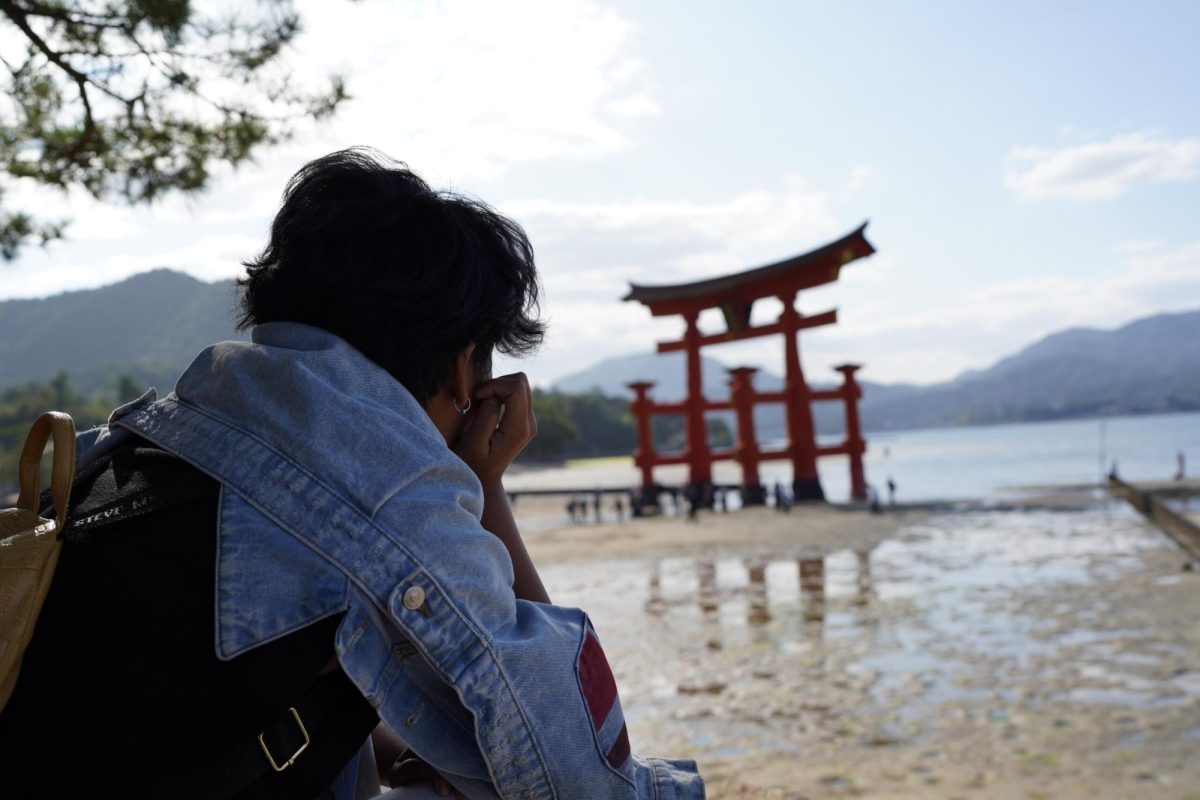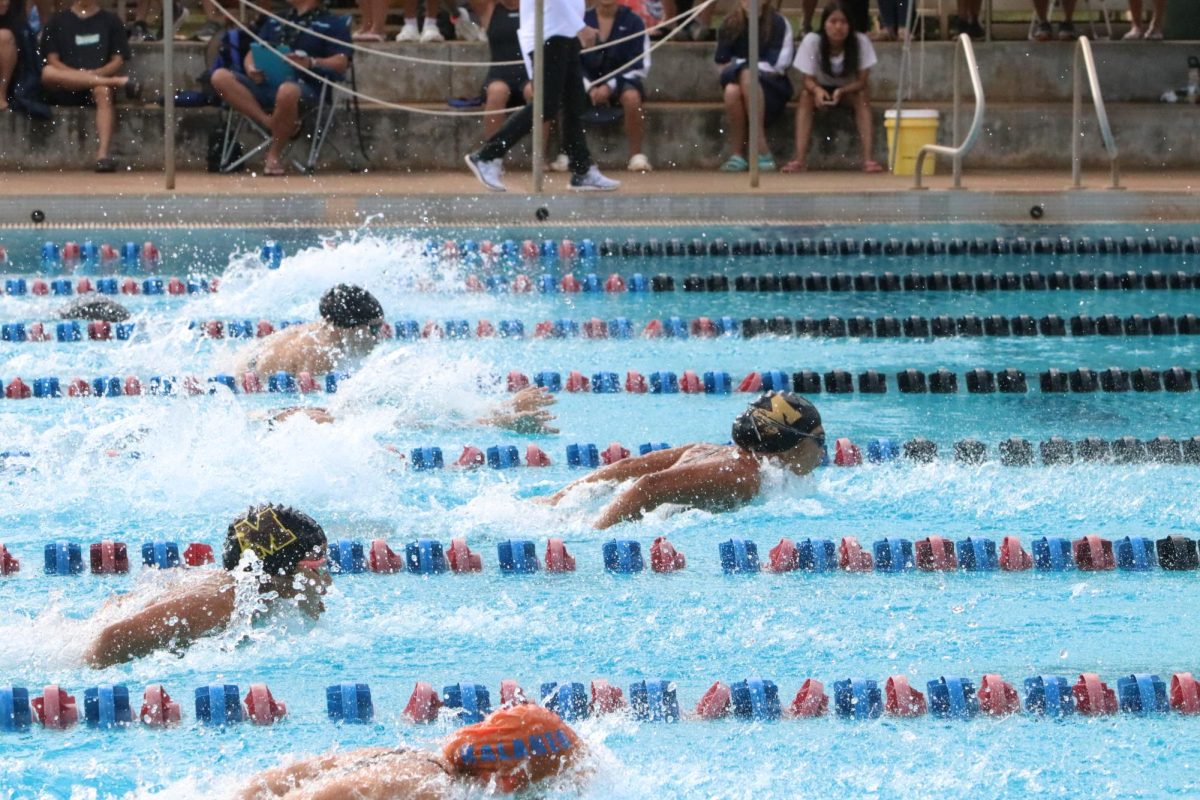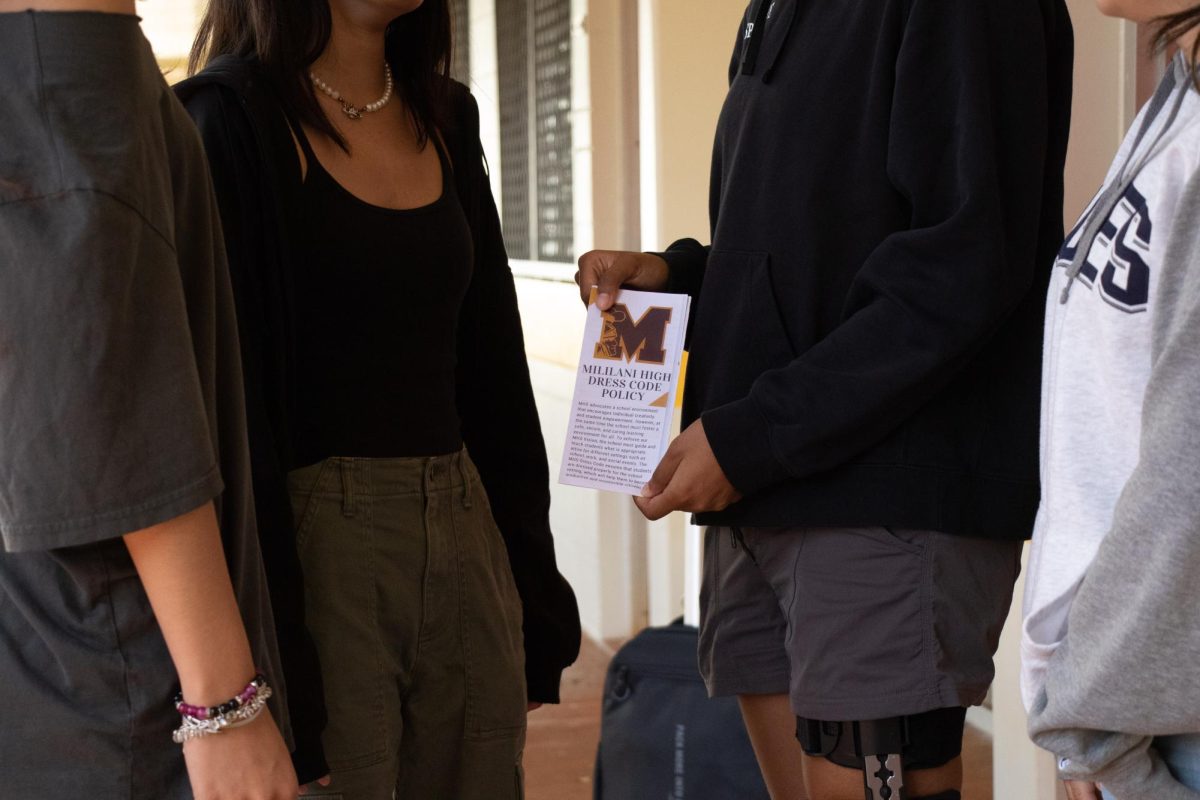Revolutionizing Through Science: Nakasato, Carney, Beeler Move On to ISEF
March 9, 2020
At this past Hawai‘i Central District Fair, hosted by the Hawai‘i Academy of Science, Sophomores Ashlynn Carney and Caleb Beeler placed second and Senior Alex Nakasato placed first. The trio received an automatic invitation to the 2020 International Science & Engineering Fair, which will be held in Anaheim, Calif.
“I’m really looking forward to seeing other projects at the State Science Fair and ISEF because these competitions have brilliant students and such phenomenal ideas. I hope that I can connect with more people that share the same interest as me in science and learn from them,” said Carney.
Carney and Beeler worked as a team on their project titled “Processing and Testing of the Invasive Plant Species, Ipomoea aquatica, as a Low-Cost and Environmentally Sustainable Soil Amendment Agent.” The two were inspired to do this after having the opportunity to visit the Pouhala Marsh last year, where they found an area that was barren.
“Later on, we found out more about this wildlife sanctuary and our teacher, who has been going there for about a decade, has seen no change in that specific area. It sparked our curiosity and from there, we started our project in hopes to find out what is going on and if there are any efficient solutions,” said Carney.
Beeler added, “We wanted to choose a topic that was both interesting and relevant to solving a community problem in Hawai‘i.”
They hypothesized that these barren areas were not receiving as much nutrients compared to the parts of the marsh next to the Kapakahi Stream, which provided plantlife with nutrients. For their experiment, the team tested the soil quality as well as a putative soil amendment agent made from Ipomoea aquaticas, an invasive species.
For their procedure process, they gathered soil from different areas of the marsh and tested for pH levels and its nutrients. To test the effects of the I. aquaticas, they mixed it in with their soil samples and grew ryegrass to measure their growth.
Beeler and Carney found that the soil of the barren areas were missing nutrients. They concluded that the farther away the soil from the stream, the less potash values it had. While there was no growth in their Pouhala Marsh sample group, in their Mililani soil samples which was their control group, the I. aquatica soil amendment agent proved to be the most efficient as it had the highest growth rate, outperforming the store-bought fertilizer, another control group.
“I hope they can learn more about utilizing natural resources to benefit people and the environment. Our project was more focused on Pouhala Marsh; however, it could be applied to many other places,” said Carney.
Beeler added, “We hope people will take away that we need to take care of the earth that we live on to not cause this issue in the future in other places.”
As for Nakasato, his project titled “Increasing the Buoyancy of Potato Based Bioplastics” was inspired by the sinking of bioplastics he created last year. For the fair this year, he wanted to create a bioplastic that could float on the surface of the water.
“If I changed the weight distribution of my bioplastics, the bioplastics with an end distribution would allow the plastic to float the most effectively, because the weight distribution would create a stable plastic that would sit on surface of the water the most effectively,” said Nakasato.
For his procedure, Nakasato held three trials for each of his experimental groups. These experimental groups were end weight distribution, middle weight distribution and no weight distribution, where the bioplastic was hollow.
“For each trial, pennies were added to the top layer of the bioplastic above the water until it sank, or tipped over losing all the pennies. This was to test which bioplastic would hold the most amount of grams on average compared to the other groups,” said Nakasato.
He found that bioplastics with a middle weight distribution held the most weight rather than the bioplastics with an end weight distribution.
From his project, Nakasato hopes people can take away that there are multiple, different, plausible substitutes for the plastics used today.
The state science fair competition will be held from April 8 to April 10. ISEF will be held from May 10 to May 15. For more information, you can visit https://www.societyforscience.org/



